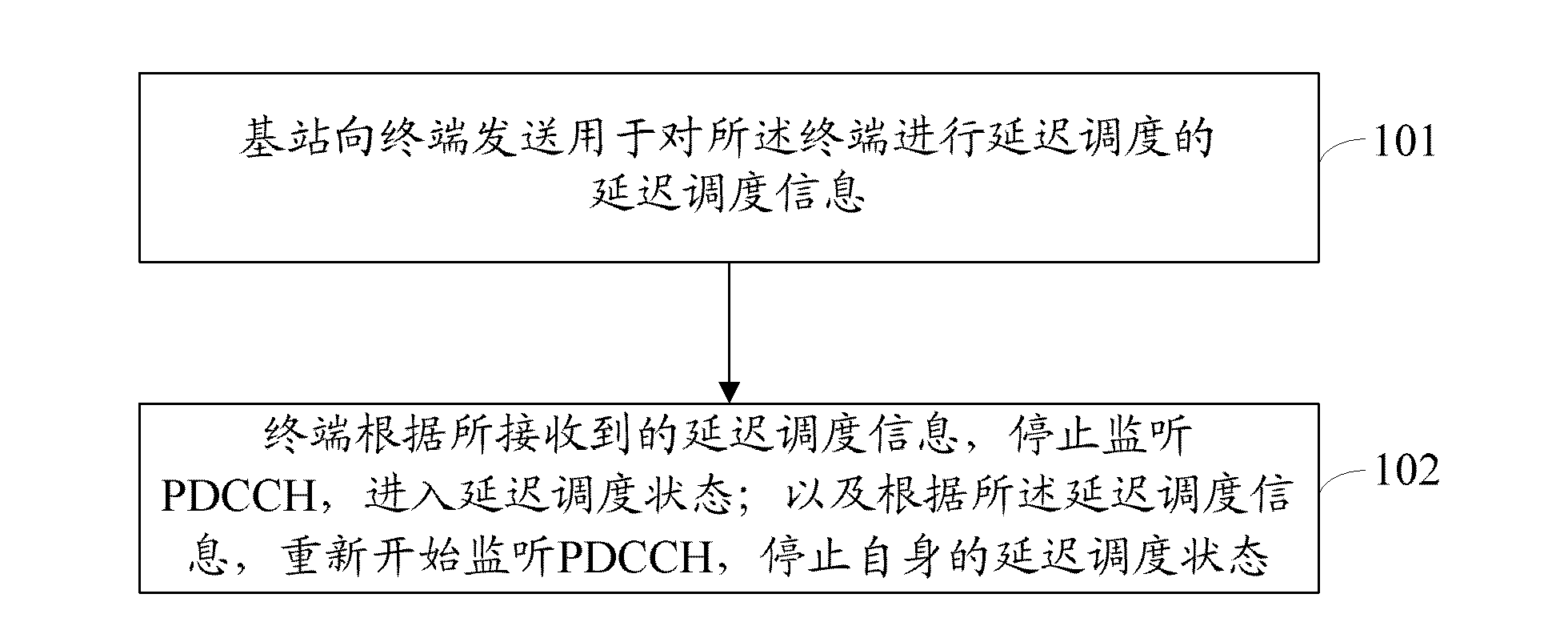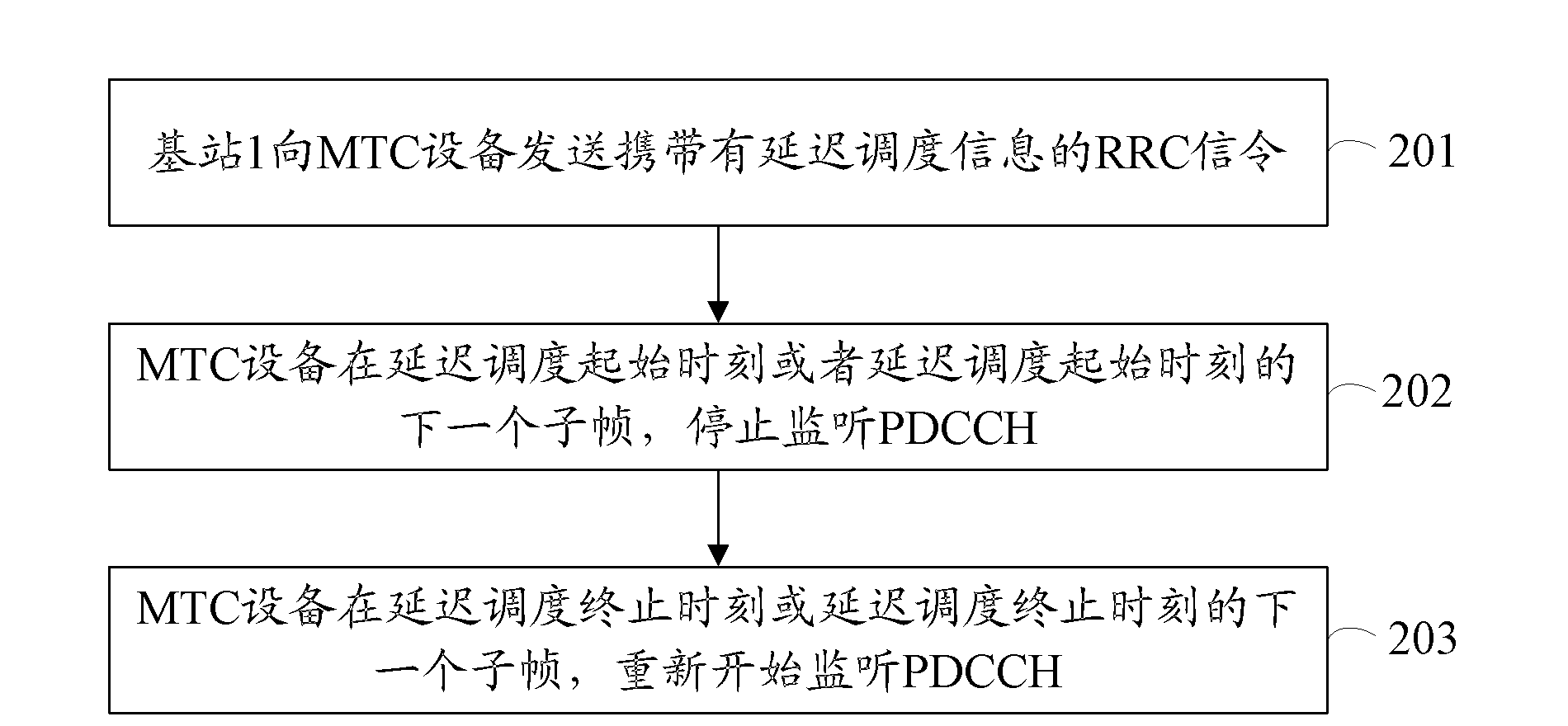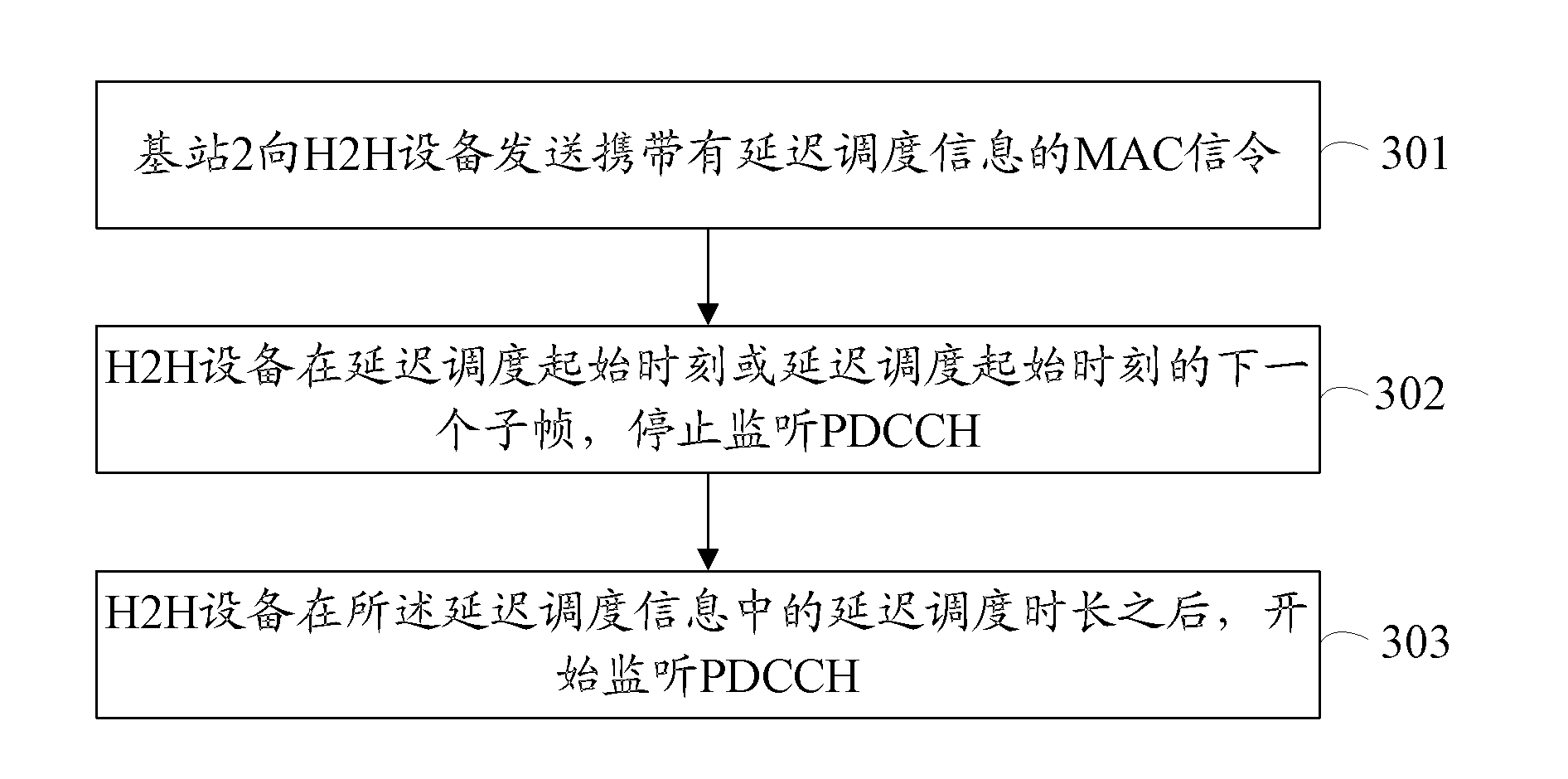Scheduling delay method and system
A scheduling method and technology of a scheduling system, applied in wireless communication, access restriction, electrical components, etc., can solve the problems of occupying multiple air interface signaling, increasing base station processing load, and multiple wireless resources, so as to improve overload handling capacity, Effects of saving wireless resources and reducing processing load
- Summary
- Abstract
- Description
- Claims
- Application Information
AI Technical Summary
Problems solved by technology
Method used
Image
Examples
Embodiment 1
[0057] In this embodiment, an MTC device is taken as an example for description. In a long-term evolution (LTE, Long-Term Evolution) system, an MTC device accesses a network through a base station 1 and is in a connected state. At this point, the MTC device has completed the random access process, completed the encryption process, and established a data access bearer (DRB, Data Radio Bearer) for data transmission. The MTC is doing business, such as sending data to the MTC server. Due to the large number of MTC devices and H2H devices connected to the network, the overload on the network side is caused. For example, it may be that the core network element such as the MME is overloaded, or the base station 1 is overloaded.
[0058] At this time, base station 1 needs to reduce the current load so as to ensure that the current network is in a normal state. In this embodiment, the base station 1 can use the following delayed scheduling method to reduce the load on the network side...
Embodiment 2
[0076] In this embodiment, the H2H equipment is taken as an example for illustration. In the long-term evolution system, the H2H equipment accesses the network through the base station 2 and is in a connected state. At this point, the H2H device has completed the random access process, completed the encryption process, and established a data access bearer for data transmission. The H2H device is doing business, including sending data and receiving data.
[0077] Due to the large number of MTC devices and H2H devices connected to the network, the network side is overloaded. At this time, the base station 2 needs to reduce the current load on the network side, so as to ensure that the network can be in a normal state. In this embodiment, the base station 2 can use the following delay scheduling method to reduce the load on the network side, such as image 3 As shown, the specific process is as follows:
[0078] Step 301, the base station 2 sends MAC signaling carrying delayed...
Embodiment 3
[0094] In this embodiment, the base station 3 in the overload state selects the MTC device to implement delayed scheduling in order to reduce the current load. The specific process is as follows:
[0095] Step 401: the base station 3 sends delay scheduling information to the MTC device through PDCCH signaling;
[0096] Here, the MTC device determines its own PDCCH signaling through the RNTI allocated by the base station 3 for itself.
[0097] Since the reception of the PDCCH signaling is limited to one subframe, that is, the MTC device receives the PDCCH signaling belonging to the subframe every millisecond, therefore, in this embodiment, the delay scheduling information does not need to include the start time of the delay scheduling, It may only include the end time of the delayed scheduling, or the duration of the delayed scheduling. Here, when the delayed scheduling information does not include the starting time of the delayed scheduling, the default starting time of the d...
PUM
 Login to View More
Login to View More Abstract
Description
Claims
Application Information
 Login to View More
Login to View More - R&D
- Intellectual Property
- Life Sciences
- Materials
- Tech Scout
- Unparalleled Data Quality
- Higher Quality Content
- 60% Fewer Hallucinations
Browse by: Latest US Patents, China's latest patents, Technical Efficacy Thesaurus, Application Domain, Technology Topic, Popular Technical Reports.
© 2025 PatSnap. All rights reserved.Legal|Privacy policy|Modern Slavery Act Transparency Statement|Sitemap|About US| Contact US: help@patsnap.com



